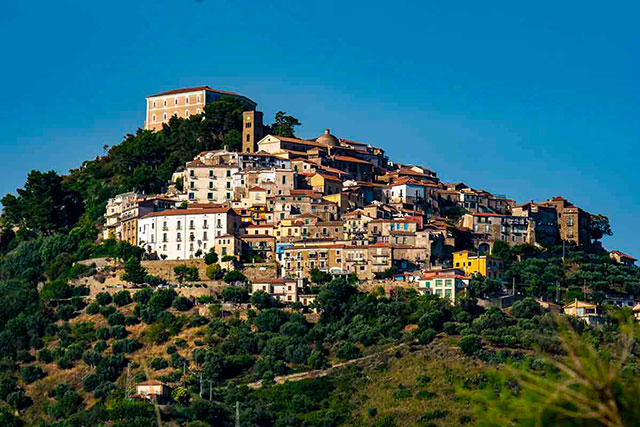Castellabate, tra i borghi più belli d'Italia Le Guide di Paestum e Velia en

Castellabate is a small town of the Cilento coast, located on a hill at about 280 m above the sea level. It has become more famous since 2010, when the movie "Welcome to the South"was done.
The medieval village has been a UNESCO site since 1998 and it is included in the Club "The most beautiful villages in Italy".
The tour shows its historical, natural beauties and brings us back to the film set.
The “Belvedere” of San Costabile is the highest and most panoramic terrace of the town. The view sweeps over the Gulf of Salerno, the islands Capri and Ischia and punta Licosa, a promontory named after the legendary siren Leucosia. What a joy for eyes and soul!!!
Here lies the imposing “castello dell’abate”, that is the abbot’s castle, founded in 1123 by Costabile Gentilcore, fourth abbot of the Abbey in Cava dei Tirreni, as well as patron saint of Castellabate.
The fortress is now a public monument, housing a little collection of amphoras and anchors in memory of the flourishing maritime trade, when the port played a very important role.
The Papal minor basilica is is the most important architectural and religious “jewel” of the town. It is dedicated to the Assumption of Mary. It was built on a previous chapel of the 10th century. It is full of several art work, but the masterpieces are a magnificent painting by Pavanino from Palermo, representing the Virgin Mary between Saint Peter and Saint John and a seventeenth-century gilded copper bust of Saint Costabile. The latter was a gift of the inhabitants who survived during the pest in 1656.
On request it is possible to visit a little exhibition of some baroque marble decorations of the basilica and the nineteenth-century flag in honor of Saint Costabile
Not far from the basilica, there is the main square that you will certainly recognize by thinking of the movie !!!
It is time to relax and enjoy the peace and beauty of the town centre that fascinated the king of Naples Gioacchino Murat and Ruggero Leoncavallo, a famous Neapolitan composer.